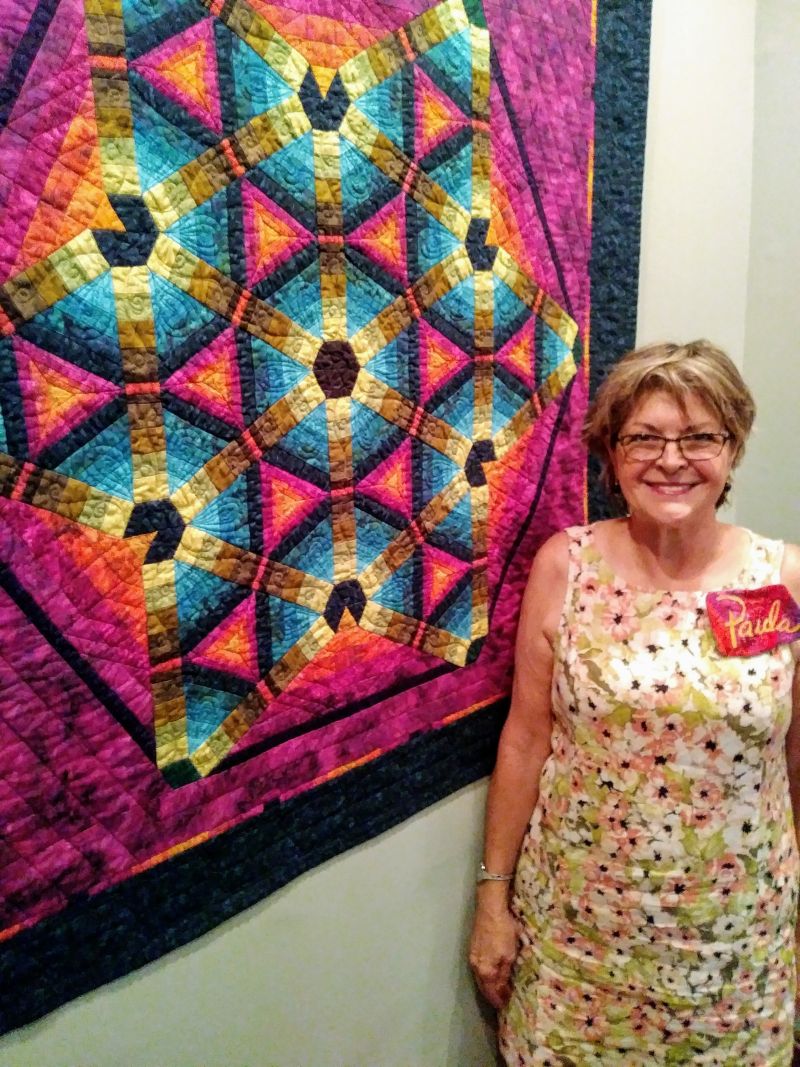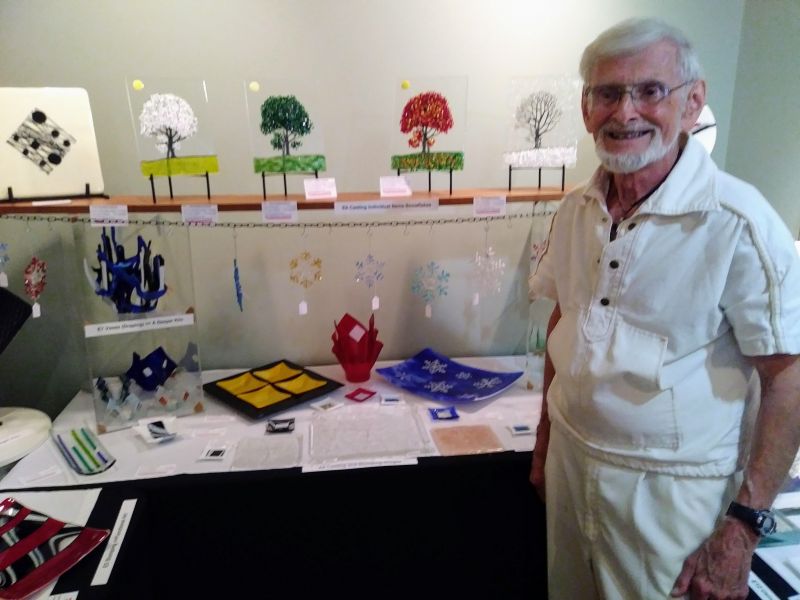
Ed McMinn
editor@mainstreetnewspapers.com
Driven by her personal, private vision, Paula Golden transforms otherwise bland swatches of fabric into striking and unique quilts that are collisions of color, shapes, impressionistic patterns, and texture.
Driven by his own personal, private vision and the fire of 1700-degree heat, Larry Mitchell transforms otherwise benign pieces of glass into decorative and functional works of glass art. Prevalent in his artistry is his brilliant use of color and his painstaking attention to detail.
Golden and Mitchell currently share the spotlight at the Montgomery Museum of Art and History at 300 S. Pepper Street with an exhibit that continues through the end of October. The museum is open Tuesday through Friday from 10:30-4:30 and Saturdays from 1-4 p.m.
Any visitor to the exhibit expecting to see what probably meets their understanding of a “quilt” will be surprised by Golden’s work. As she put it, “These are not your grandmother’s quilts.” Golden is one of a cadre of contemporary quilters who fashion their art with no intentions of having it become a bed covering. Rather, Golden views her quilts as being “like a river that runs through the past, through history, connecting us all together.
“Quilting ties into social and economic history,” she said. “It’s fascinating. There is always something new to learn about patterns and fabrics and how they can be used to illustrate a particular historical or cultural moment.”
Golden’s mother taught her to sew. She decided to move on to making a quilt and promptly trashed her first effort. Only after taking a quilting class in Hawaii in 1980 did she discover she had found her artistic calling.
Golden now travels across the country to exhibits and shows displaying and selling her artwork. She also teaches professionally. For instance, after the Montgomery Museum exhibit, she will pack up her six suitcases of quilts and head off to Colorado Springs to teach a quilting class.

Larry Mitchell launched a hobby that turned into artistry after he retired from Virginia Tech in 2001. He had taught mechanical engineering for 30 years. He dabbled in glass art for three years before deciding working with glass was what he wanted to do.
He cited one of the problems with glass art is that “very few people understand there is such a thing.” Even fewer people, he said, understand there are three distinct areas of glass work: cold glass, warm glass and hot glass. Cold glass involves working with glass at room temperature. Stained glass is an example. The glass is cut and soldered into place.
Working with warm glass requires heating the glass to 1700 degrees F. This allows Mitchell to create glass art with multiple layers fused together. Hot glass work requires working with a live flame and a torch with the glass heated to 2200 degrees F. This is what is familiarly known as glassblowing.
Mitchell now works with warm glass after starting out with small jewelry pieces. He expanded into integrating jewelry with glass. As he became more proficient, he moved on to both functional art work such as trays and display glass pieces. His specialty is display pieces that feature exhaustively detailed trees.
Mitchell can be found many days teaching glass work classes at the Blacksburg Community Center on Patrick Henry Drive.



